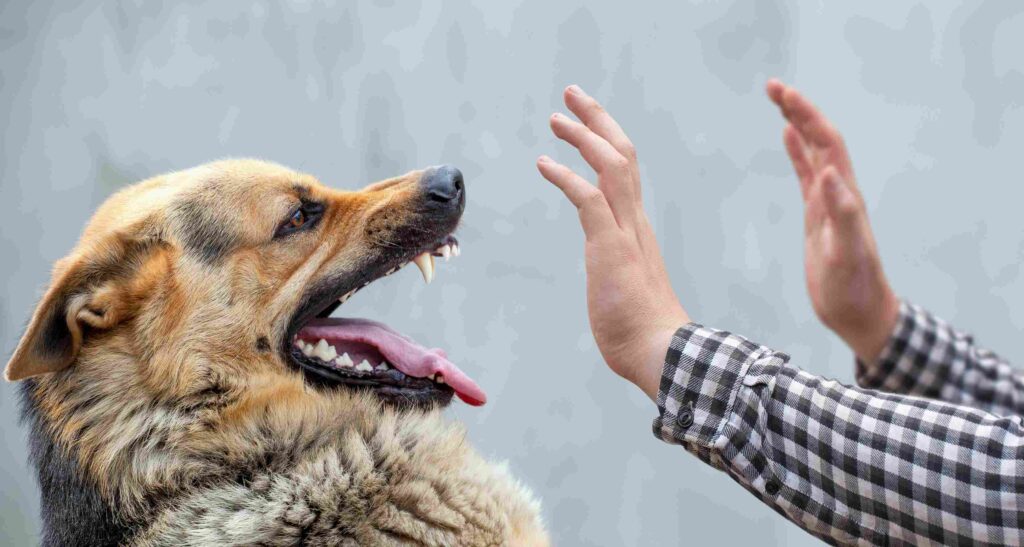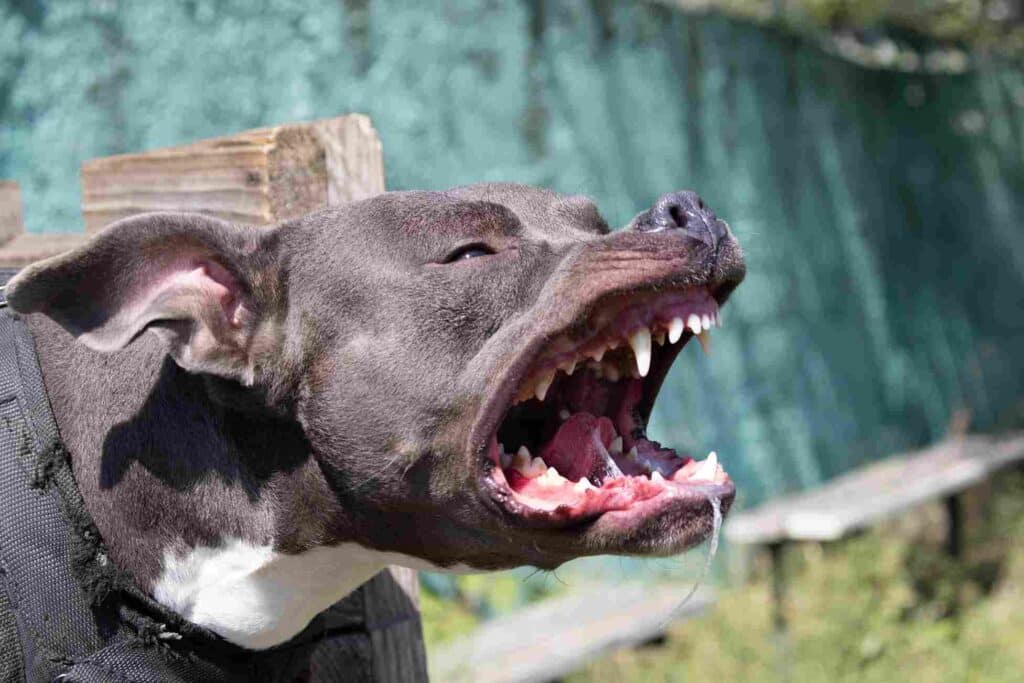As a pet owner, it is important to be aware of potential triggers for canine aggression and how best to avoid them. Even if you are not a dog owner, it is good to know what to watch out for when you are around dogs. Dogs are loyal companions but can become dangerous with or without warning or provocation. Knowing what signs to look for, as well as understanding canine behavior in general, can help prevent dog bites from occurring.
Understanding Dog Behavior
While many dogs are beloved family members, it’s important to understand that they are still animals, and their behavior can be unpredictable. After all, dogs can become aggressive when they feel threatened or uncomfortable, or for reasons that are unknown. As such, it’s important to be aware of the warning signs, as well as how to respond in a manner that won’t escalate the situation further.
When a dog is feeling scared or threatened, they may:
- Growl;
- Bare teeth;
- Snarl;
- Bark aggressively;
- Lunge at you; or
- Curl their lips back and show their teeth as an intimidation tactic .
It’s also helpful to know how dogs communicate with one another through body language cues such as:
- Tail wagging;
- Ear position (up vs down);
- Lip licking/smacking;
- Yawning/stretching/panting;
- Eye contact (direct vs averted);
- Head position (high vs low); or
- Posture (standing tall vs crouched).
Knowing how your pet communicates with other animals will help you better understand its behavior around humans too.
The Most Common Types of Dog Bite Scenarios
According to the American Veterinary Medical Association, approximately 4.5 million Americans experience dog bite injuries annually, and over 800,000 are treated for injuries they sustain as a result. Recognizing situations that could potentially lead to a dog bite is key to averting it and protecting yourself from harm.
Scenario 1: A Territorial Dog
The most common scenario leading to a dog bite is when someone unfamiliar approaches an aggressive or territorial animal. It’s important to recognize the dog’s body language and vocalizations before getting close, as dogs often become anxious or defensive when confronted by unfamiliar people.
Scenario 2: An Unsupervised Child
Adults should always be present to monitor interactions between children and animals they are not acquainted with, at least until both parties become more comfortable in each other’s presence. This is key to preventing dangerous situations due to the lack of understanding on behalf of the child when it comes to canine communication signals and body language cues that could indicate fear or uneasiness from the animal. By keeping a watchful eye on such encounters, adults can help ensure everyone involved remains safe. These situations can be particularly troublesome due to the size of children. Their size often puts their face near the level of the head and face of the dog. It is very common for dog bites to children to occur on the child’s face.
Scenario 3: A Strange Dog
To prevent altercations, dog owners should maintain their distance from one another until both pets have had the opportunity to acclimate without feeling threatened by another’s presence. Then and only then should they allow their animals to approach each other under careful supervision.
Scenario 4: Aggressive Breeds
Some breeds can be more aggressive than others, especially when provoked. Extra caution should be exercised around these types of breeds, including pit bulls and rottweilers. While breed specific legislation is illegal in Minnesota, if you happen to be the pet owner of such a breed, please be sure never to never leave your dog unattended near small children, as they may inadvertently trigger defensive behaviors, regardless of how friendly your furry loved one might seem.
Scenario 5: Stressful Situations
Loud noises from events like Independence Day fireworks and thunderstorms can trigger aggressive behavior in some dogs. Responsible pet owners will be aware of this, and have well-thought out plans in place to ensure that both the dog – and the people are around it – are protected until the event is over.
How to Prevent Dog Bites
The first step in preventing a dog bite is learning about common warning signs that indicate when a dog may become aggressive or defensive. Signs such as growling, showing teeth, raised hackles (fur along the back), and pinning ears back are all indicators that a dog may attack. It’s also important to recognize body language cues like stiffening of posture, lowered head position with eyes averted away from you, and lip licking/yawning which could signal fear or anxiety on the part of the animal.
As a responsible pet owner, the following tips and suggestions can help keep you, your pet – and everyone around you – safe from harm:
- Spay/neuter your dog;
- Make sure all family members know what appropriate behavior entails. Kicking, hitting and other acts of violence against a pet should never be tolerated;
- Avoid playing games like tug-of-war, which may encourage aggressive behaviors in some cases;
- Keep food out of reach while feeding pets so they do not become possessive over it; and
- Ensure pet vaccinations are up to date at all times – especially rabies shots.
When engaging with a dog you are not familiar with, it is extremely important to display appropriate body language. This means:
- Not staring directly into their eyes;
- Positioning yourself at an angle instead of front-facing;
- Refraining from extending over their head or entering their personal space unless they have given the go-ahead through cordial behavior such as a wagging tail or puffing happily;
- Steering clear of abrupt motions since these can be interpreted as aggressive moves and significantly amplify hostility.
Outside of this:
- Always ask for permission prior to approaching – or attempting to touch – an animal you are not familiar with; and
- If ever confronted by a hostile dog, maintain your composure but never turn your back on them as this could potentially spur further attacking behavior.
What to Do If You Are the Victim of a Dog Bite
If, despite taking preventive measures, you find yourself involved in a situation where you have been bit by a dog, it’s important to seek medical attention as soon as possible. After you have done so, you should speak with an attorney to ensure your rights are protected.
Dog bites can cause serious physical and psychological trauma, both of which require medical attention and can have lasting, permanent effects. A lawyer that specializes in personal injury claims – and more specifically, dog bite claims – will help you navigate through the chaotic next steps to ensure everything is documented should you choose to file a claim against the dog’s owner.
At Nelson Personal Injury, LLC, we devote our entire practice to representing clients who have sustained a personal injury due to another party’s negligence or wrongdoing, including dog bites. Our team is well-versed in how to best navigate state laws governing liability issues relating to dog bites and dedicated to helping our clients get the justice and compensation they deserve. We look forward to speaking with you and learning more about the circumstances surrounding your dog bite case.




